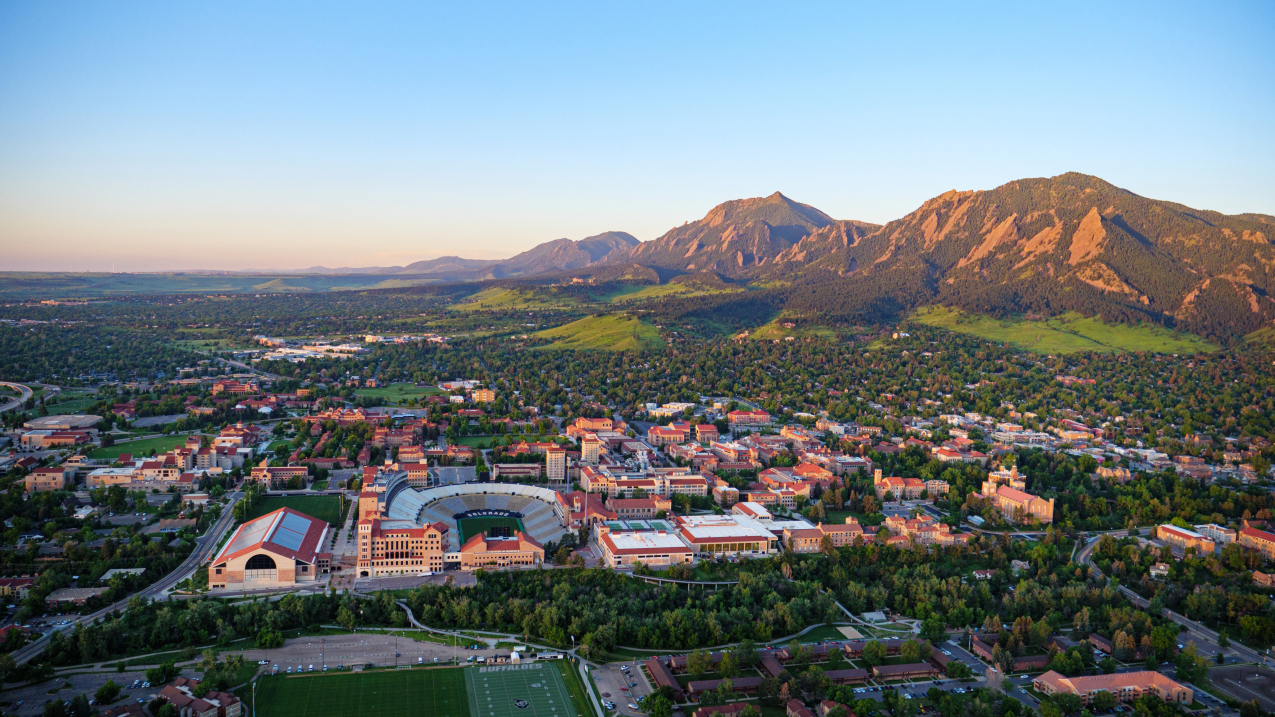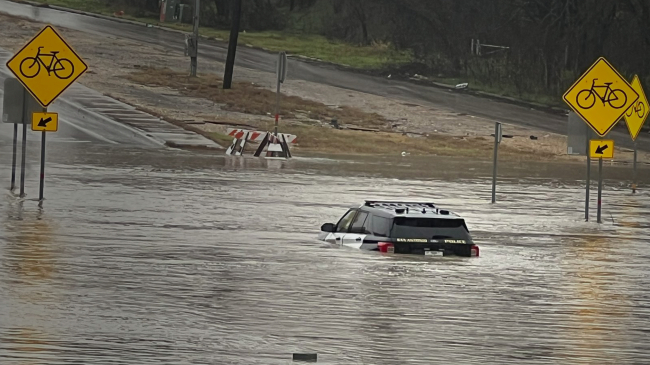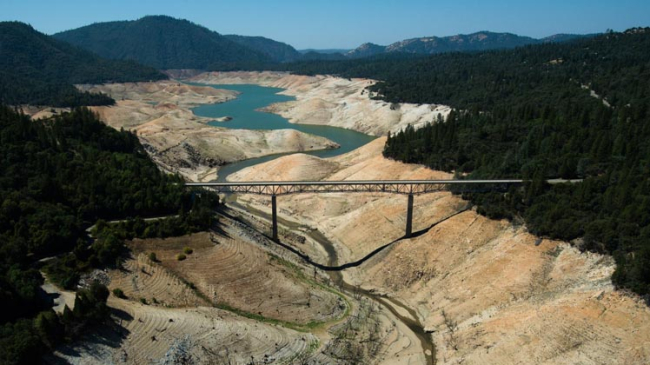Cooperative institute will support NOAA’s Earth system and data science research

This 2021 aerial photo shows Boulder, Colorado, from the north with the University of Colorado campus in the foreground and the Flatirons in the background. NOAA’s David Skaggs Research Center is located on the Department of Commerce campus, which can be seen at the foot of the grassy hill in the middle of the image. (Image credit: Glenn Asakawa/University of Colorado)
NOAA has selected the University of Colorado Boulder to host a cooperative institute focused on Earth system research and data science that builds upon the scientific accomplishments of more than half a century of collaborative work between the two institutions.
The new cooperative institute, formally designated the Cooperative Institute for Earth System Research and Data Science, or CIESRDS, will conduct collaborative research in support of NOAA’s mission to understand and predict Earth’s changing environment from the deep sea to the outer edge of the atmosphere, and to manage and conserve America's coastal and marine resources.
“The partnership between NOAA and the University of Colorado has been as fruitful as it has been durable,” said NOAA Administrator Rick Spinrad, Ph.D. “We are delighted that this relationship will continue to help us answer some of our nation’s most critical scientific questions and support the development of the next generation of scientists.”
The cooperative institute, or CI, will continue to assist NOAA in advancing research that improves weather and climate prediction at all scales, prioritizing work that protects lives and property while building society’s resilience to environmental change.
Specifically, the CI will support NOAA’s ongoing work in the areas of weather research and forecasting, including space weather; climate and ecosystem science, and prediction of anticipated changes in Earth’s atmosphere due to greenhouse gas pollution, air quality degradation, and stratospheric ozone depletion; regional science applications; and scientific outreach, education and diversity. An additional focus will be Earth System data science, stewardship and applications.
Up to $565.8 million may be made available to fund the institute over the course of the five-year award, which runs from September 1, 2022 to August 31, 2027, with actual funding contingent upon federal appropriations. NOAA has an option to renew the agreement for another five years based on successful performance.
The institute will be administered by the University of Colorado Boulder and will build upon the successes of the Cooperative Institute for Research in Environmental Science (CIRES), which was created by NOAA and the University of Colorado in 1967. During the 54-year collaboration, University of Colorado researchers affiliated with CIRES who worked alongside federal scientists at NOAA’s David Skaggs Research Center have made significant contributions to NOAA’s Weather-Ready Nation initiative; to climate science, adaptation and mitigation; and to the use of artificial intelligence in investigating the vast flows of of Earth systems data generated by NOAA’s observation and satellite networks.
CIRES scientists at NOAA have played vital roles in recent large-scale field campaigns, such as the 2016-2018 Atmospheric Tomography Mission, known as ATom, a complex NASA-NOAA mission to sample and study air pollution over the remote ocean, and the Fire Influence on Regional to Global Environments and Air Quality study, or FIREX-AQ, another NOAA-NASA mission that examined the chemical evolution of wildfire smoke. A CIRES scientist led the U.S contingent to MOSAIC, an unprecedented year-long international field research mission to investigate the changing Arctic from a polar icebreaker embedded in sea ice.
The relationship between NOAA and the University of Colorado has helped make Boulder an international center for Earth and atmospheric sciences. University of Colorado scientists and staff currently based at the David Skaggs Research Center will continue to work on the Department of Commerce campus.
NOAA’s Cooperative Institute Program is a powerful tool designed to address emerging research and development needs of NOAA’s mission by partnering with academic research institutions with outstanding graduate degree programs. Together, NOAA and the CI leverage the science, technology, outreach and education that do not exist within NOAA to support NOAA’s mission. NOAA oversees 20 cooperative institutes consisting of 70 universities and research institutions across 28 states and the District of Columbia.
Media contact
Theo Stein, NOAA Communications; theo.stein@noaa.gov, (303) 819-7409




